Question: And how can medical music correspond to natural evolution?
Peter Hübner: The medically correct course of action of a scientifically oriented music medicine lies in the harmonic reinforcement of the natural structure of order of the biological system through the application of the laws of harmony which naturally determine the structure of order of the biological system and also the microcosm of music.
This was the view of the learned doctor, musicologist and mathematician Pythagoras – and, following extensive research, this is also the view of modern science.
One must, however, acquaint and familiarise oneself along the way with these natural laws of nature and the microcosm of music and – if one wishes to employ music as a therapeutic medium – one must then also learn the high art of classical composition.
And this then is not only true for the tonal aspects of the musical spatial order, but also for the rhythmic aspects of its temporal order – the area of its temporal structuring.
When music is employed for the structuring of natural harmonic order in the biological system via the ear, it must definitely be a work of musical craft which employs polyphony, the counterpoint and the high art of the fugue. For it is these kind of musical structures that are to be found in the microcosm of music – and not homophony which, on mere superficial observation of the microcosm of music, one may believe one recognises as intrinsic features in the overtones.
The corresponding is then also true for the temporal harmonic order of the music. Here too there is no rhythmic definition like it is presented to us by rock, pop, light music and, in the same way, by modern interpretations of classical works.
From this it follows that it is nothing short of stupid, if one uses some kind of sound carrier with musical recordings from those areas of music cited as music medicine. Here too the order of the musical structures is just as incorrect as in the case described, where electrical impulses of an organism whose harmony is disrupted is used structurally for the therapy.
So here too, if the cited customary music recordings are used for music medicine, the process of natural evolution is turned upside down.
Such a course of action is certainly the simplest, but also the least intelligent way of performing music medicine, since it requires of the therapist neither musicological nor medical training.
The central failing of this kind of therapy using customary music productions from the areas cited lies in the fact that none of them are harmonically structured and thus are not harmonic information carriers – that they are discordant either in their tonal or rhythmic aspect and, as such, do not meet the harmonic requirements set by the natural order of our biological system.
Also belonging to this sector is the fatal endeavour to structure a piece of music according to the average rhythm of any organ – for example, of the heartbeat or the respiration. This run-of-the-mill form of insistent rhythm-fixated procedure contradicts the principles of natural harmonic orders and so gives rise to disruption of the natural biological order. Here too, therapists must learn to comply with nature, as nature will not comply with their restricted insight.
Any such disruptions arising from the therapeutic application of non-harmonically structured music do not become immediately apparent, as everyday a multitude of corresponding disruptions set in on the individual anyway. However, they are then present in the compound total of these disruptions.
In pharmaceutics the harm caused by this compound effect is already well-known – this is why patients, doctors and pharmacists are always seeking new ways of reducing this compound effect.
Question: What are then the essential features of medical music without side-effects?
Peter Hübner: Harmonically structured medical music will always have particular features: no fixed or defined rhythm, no fixed or defined tonality, but instead a multi-layered, integrated polyrhythm and a multiform, integrated polytonality – both of which are themselves integrated via the art of the fugue, polyphony and the counterpoint.
The high art of classical composition will then become integrated in harmonically structured medical music.
So if today, a creator of music fulfils those compositional requirements cited, but is unable to find musicians who, in the range of their interpretative skills, master the essential polyphonic art mentioned, then he must take the matter into his own hands.
He must turn to electronic or digital instruments, acquire the knowledge and skills there, and execute the interpretation himself.
For the classical composer this is, without a doubt, a great additional and costly learning and working process, but he has no alternative – if he wishes to structure harmonic music according to the laws of harmony of the microcosm of music which can then be used in the medical field to support the maintenance and structuring of natural biological order.
| 繧オ繧、繧ィ繝ウ繝㋚ぅ繝輔ぅ繝☗け繝サ繝溘Η繝シ繧ク繝☗け繝サ繝。繝勐ぅ繧ケ繝ウ | |
| Home • Site Map • Research • Reports • 蝗ス髫帷噪蟆る摩螳カ • Music Preparations • Fundamentals • News • 繝壹♥繧ソ繝シ繝サ繝偵Η繝シ繝悶リ繝シ • Store • Contact | |

Peter Hübner – Music as a Harmonic Medical Data Carrier
Music Therapy without
Scientific Foundation
Scientific Foundation
“Conventional music cannot be defined in a natural-scientific sense. Here we are talking about art and the
freedom of art and artistic interpretation, and this extends from the sentiment of the pop song to the destructive
fury of hard rock music.
To approach medical music in such a conventional musical manner would remove the scientific objectivity – this accounts for the failure of any attempt made to utilise any kind of artistic performance in music therapy – at least in so far as it can be neither defined nor evaluated scientifically.
The scientifically objective definable and provable medical benefit can only be established through a musicological approach to the matter.”
To approach medical music in such a conventional musical manner would remove the scientific objectivity – this accounts for the failure of any attempt made to utilise any kind of artistic performance in music therapy – at least in so far as it can be neither defined nor evaluated scientifically.
The scientifically objective definable and provable medical benefit can only be established through a musicological approach to the matter.”
Peter Hübner
Question: Is your Medical Resonance Therapy Music® – music, medicine, or a type of information? The term ‘music’ suggests music; the terms ‘medical’ and ‘therapy’ suggest medicine or medication; and the term ‘resonance’ suggests some kind of physical fact. How are these things connected?
Peter Hübner: We all know such things from other fields which cannot be clearly classified.
Take, for example, electrical current. One person might say current flows, whilst another might speak of a changing magnetic energy field. Both are correct.
Judgement is in the eye of the beholder, or arises out of the method of examination: one examines the electricity, the other examines the magnetism.
But there is a still more general example in the natural sciences. In physics the question arose at one point: is light also something material or does it consist merely of vibrations? Two theories were finally developed here, the corpuscular theory and the wave theory. But neither could prove to the other that only his own point of view is correct.
It is much the same with Medical Resonance Therapy Music®. From the musicological point of view, it is a representation of the structural reality of the microcosm of music, the aim of which is to convey information about its integral laws of harmony – nothing more, nothing less.
As I make use of sounds in this presentation of the harmonic world – like a writer makes use of the printed word on paper for his information – one initially thinks that it is music.
Peter Hübner: We all know such things from other fields which cannot be clearly classified.
Take, for example, electrical current. One person might say current flows, whilst another might speak of a changing magnetic energy field. Both are correct.
Judgement is in the eye of the beholder, or arises out of the method of examination: one examines the electricity, the other examines the magnetism.
But there is a still more general example in the natural sciences. In physics the question arose at one point: is light also something material or does it consist merely of vibrations? Two theories were finally developed here, the corpuscular theory and the wave theory. But neither could prove to the other that only his own point of view is correct.
It is much the same with Medical Resonance Therapy Music®. From the musicological point of view, it is a representation of the structural reality of the microcosm of music, the aim of which is to convey information about its integral laws of harmony – nothing more, nothing less.
As I make use of sounds in this presentation of the harmonic world – like a writer makes use of the printed word on paper for his information – one initially thinks that it is music.
|
医療共鳴セラピーミュージック®
Medical Music Preparations on CD |
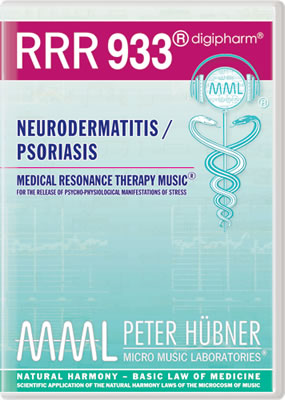 Neurodermatitis / Psoriasis 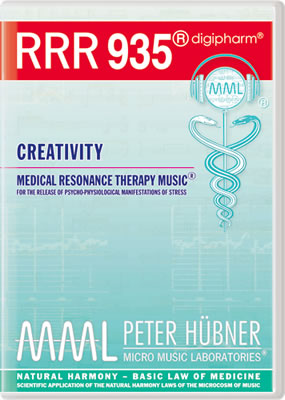 Creativity 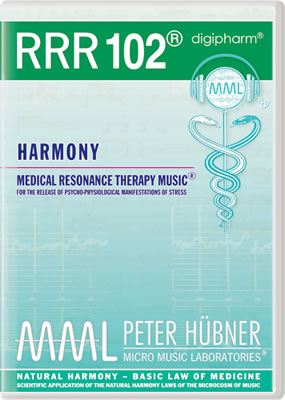 Disorders of the Hormone & Immune System 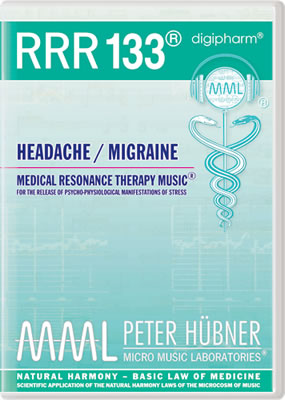 Headache / Migraine 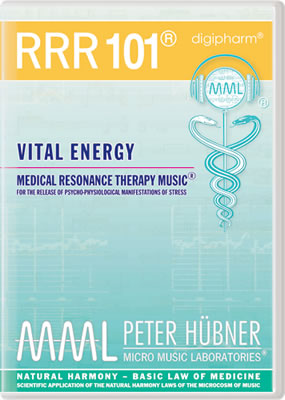 Vital Energy 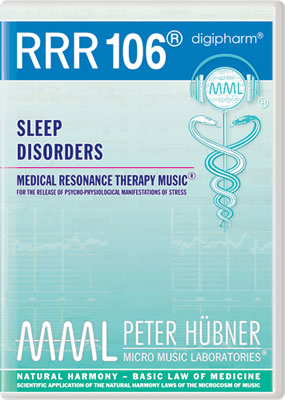 Sleep Disorders  Harmony |
|
If you like to look at the |
With kind permission of AAR EDITION INTERNATIONAL
© 1998- SCIENTIFIC MUSIC MEDICINE | Contact
Subject to change in the interests of scientific advancement.
© 1998- SCIENTIFIC MUSIC MEDICINE | Contact
Subject to change in the interests of scientific advancement.